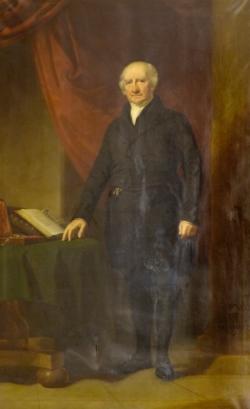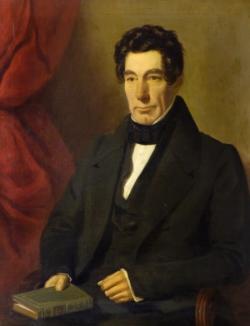Victorian Surgeons

John Crichton, from an 1841 painting by John Gibson(DUNUC ARTS:2378)
John Crichton (1772-1860)
Born in Dundee, John Crichton was one of the original Attending Surgeons appointed to the Dundee Infirmary when it opened in 1798. He worked there until the new Royal Infirmary was opened in 1855. His marriage as a student to a member of the Baxter family, considered an act of extreme folly by his friends, endured happily for 61 years. He was a faithful member of the Glasite Church and never left his homeland. Crichton Street in the centre of Dundee was named after his family by way of compensation for losing their home (where Crichton was born) in order to make way for a new road linking the High Street to the river in 1783.
Crichton was known as one of the most skilled surgeons of his day, in particular for his speciality of lithotomy to remove stones from the urinary tract. His mortality rate of less than 7% of over 200 of these operations was remarkable in the days before effective anaesthesia and antisepsis. Crichton put his success down to "the happiness of a mind that was never ruffled or disconcerted, and a hand that never trembled during any operation".
Alexander Bell (1775-1852)
Born in Cupar, Alexander Bell served as GP in Dundee for 43 years, and was Attending Surgeon at Dundee Royal Infirmary from 1807-37.
He had been surgeon and lieutenant in the Loyal Tay Fencibles during the Irish rebellion of 1798, and was an early proponent of vaccination against smallpox, having witnessed the failure of inoculation during his training.

Alexander Bell, from a painting by
John Stewart (DUNUC ARTS:2472)

David Greig (Private collection)
David Greig (1832-1890)
The son of a Dundee surgeon and chemist, David Greig's interest in medicine stemmed from helping his father to prepare medicines, although in later years he was to prefer the vix medicatrix nature (healing power of nature) approach. He was a cool and safe operator in a crisis, and served as surgeon at Dundee Royal Infirmary from 1859-1871, and consulting surgeon until 1890. He was the main founder and first secretary of the Forfarshire Medical Association. Following a distinguished undergraduate career at Edinburgh, his professors Simpson and Syme sent him and two other young surgeons to the Crimea to show how chloroform should be used. He went there on the same ship as Florence Nightingale and served with her at Scutari. There he had to bury his Edinburgh colleagues who had succumbed to typhus, only narrowly recovering from the same illness himself. He went on to serve as one of the surgeons of the 17th Regiment of Foot until the end of the war. He was awarded the Turkish and Crimean medals and wrote an extensive account of his experiences at the Crimean War.

Instrument case owned by Mr Andrew Willison, one of the first appointed surgeons at the Dundee Infirmary, where he served from 1798 to 1822 (DUNUC 3968)